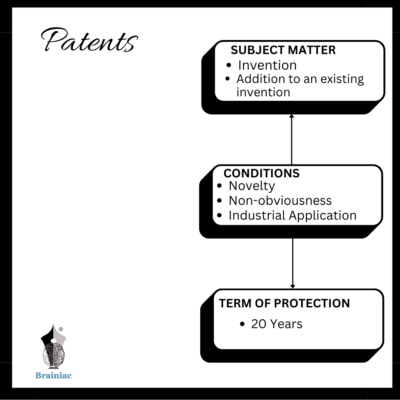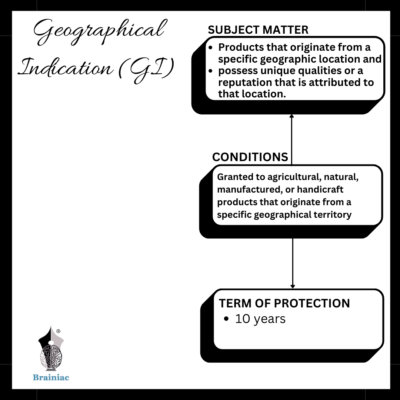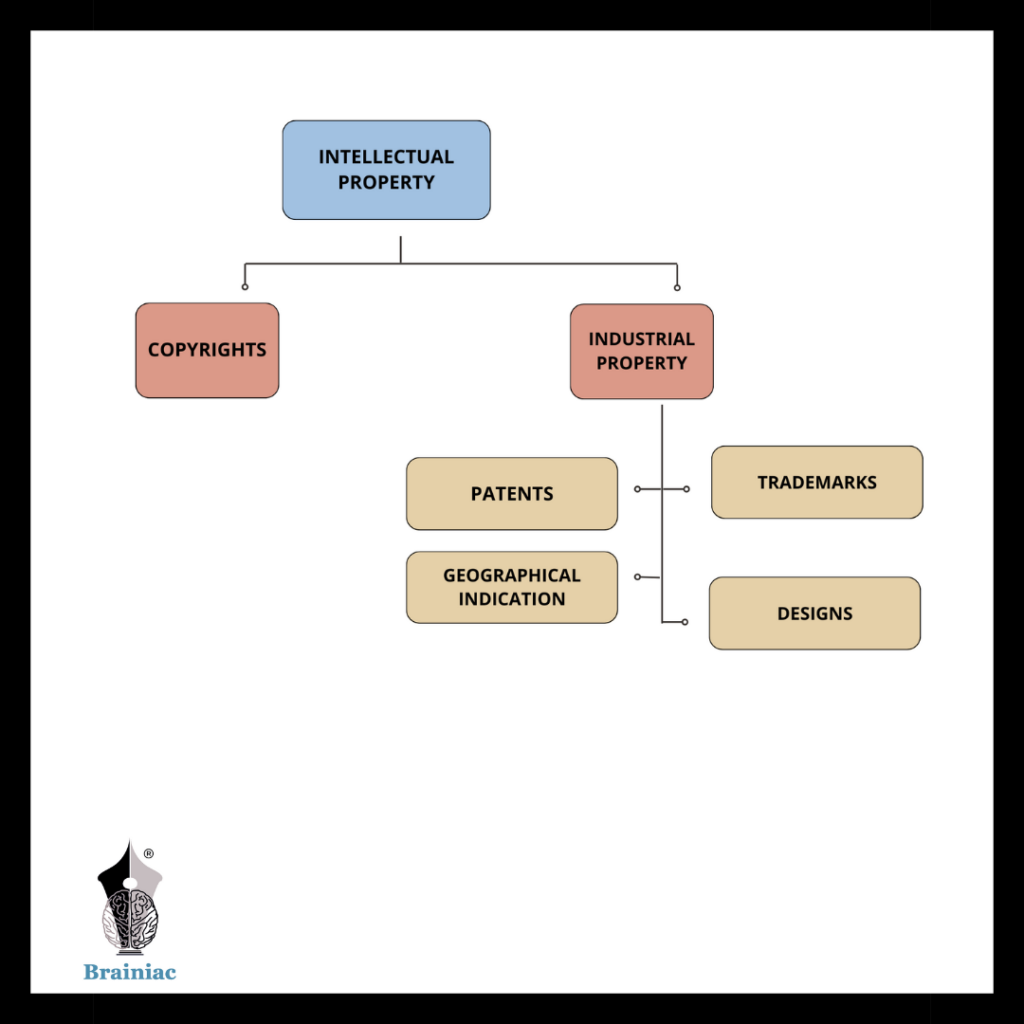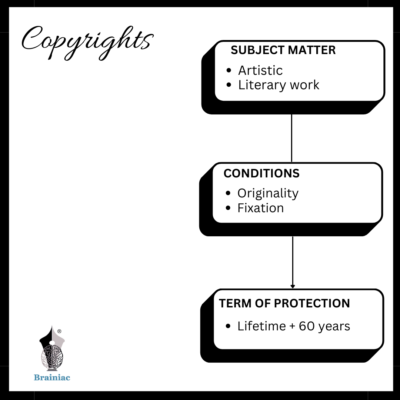Still unsure which intellectual property (IP) will safeguard your song or prevent others from stealing off your brand name? The objectives and conditions for various forms of IP protection are outlined in this article.
Copyrights:
Relevant Enactment – Indian Copyrights Act, 1957
Copyright is the branch of intellectual property that protects literary and artistic works. Copyright grants the creator of a literary or artistic work the exclusive right to control the reproduction and distribution of their work. This means that others cannot copy or exploit the work without the author & permission. Copyright law covers a vast range of subject matter, including songs, movies, paintings, and even building blueprints. Essentially, any creative work is eligible for copyright protection. However, two conditions must be met in order to obtain copyright protection. Firstly, it must be original, and secondly, it must be fixed in a tangible form. This means that the work cannot simply be an idea, but rather it must be expressed in some concrete form. Copyright law only safeguards the
expression of an idea, not the idea itself. In India, the duration of copyright protection is the lifetime of the author plus an additional 60 years after their death, and it is the longest protection provided by any intellectual property law.
Trademarks:
Relevant Enactment – Indian Trademarks Act, 1999
A trademark refers to a name, logo, or symbol that is used to identify the brand of the individual or entity using it. The primary purpose of a trademark is to distinguish the products or services provided by one individual or entity from those of others. A trademark is a distinctive feature that helps a business maintain its consumer base and prevents others from unfairly benefiting by using someone else trademark in a deceptive manner. In order for a trademark to be registered, it must meet two specific criteria. It must first be able to be graphically represented, meaning it should be in a form that is visible to the eye, and must also be distinguishable from rival goods in the market. However, the registration of trademarks in India is not necessary. A trademark is given 10 years of protection
starting from the application filing date, and it can be renewed every 10 years by paying the renewal costs to the Trademark Registry.

Patents:
Relevant Enactment – The Patents Act, 1970
A patent is typically granted for inventions or the development of new technologies, including new additions to existing technologies. A patent is a government-granted exclusive right given to the inventor. This right allows the inventor to prevent others from using, making, or selling the invention for a specific period of time. The main objective of this grant is to incentivize inventors to make greater contributions towards the development of the country. It also serves as a means of recognising and rewarding their efforts, investments, and dedication in creating inventions that are worthy of patent protection. Not every invention is eligible for a patent. To qualify, the invention must be new, non-obvious, and have industrial application. Section 3 of the Patent Act, 1970 provides a comprehensive outline of what is permitted and prohibited for patent protection in India. In India, a patent is protected for a term of 20 years from the date of filing, subject to some restrictions.

Geographical Indication:
Relevant Enactment – The Geographical Indications of Goods
(Registration and Protection) Act, 1999
A geographical indication is unique among other intellectual property rights in that it grants rights not to individuals, but to a community. A geographical indication is a label applied to products that originate from a specific geographic location and possess unique qualities or a reputation that is attributed to that location. Geographical Indication is a title primarily granted to agricultural, natural,
manufactured, or handicraft products that originate from a specific geographical territory. Darjeeling Tea was the first product in India to be granted a Geographical Indication (GI) registration in 2004. As previously stated, a registered Geographical Indication (GI) is a type of public property that belongs to the producers of the goods. It is not suitable for licensing, pledging, mortgaging, or any similar purposes. While it is not mandatory to register a Geographical Indication (GI) as a trademark, obtaining a registration certificate can provide additional protection against unauthorised use. In India, the term of protection for a GI is also 10 years and the same can be renewed every 10 years. Banarasi
Saree, Nagpur Orange, and Blue Pottery of Jaipur are a few examples of products in India that have been granted GI tags.

Designs:
Relevant Enactment – The Designs Act, 2000
The term "design" refers to the elements of shape, pattern, configuration, ornamentation, or colour composition that are applied in either two-dimensional or three-dimensional form, or both, using any process, whether manual, chemical, mechanical, separate, or combined. These characteristics are intended to appeal to the eye and are the sole basis for judgement of the finished article. To put it simply, a design safeguards the visual elements that are incorporated into a product. The design of a product is not related to its functionality or usage. A design must meet certain requirements in order to be registered, including being original, having not previously been disclosed to the public, being distinguishable from already-registered designs, and not containing any obscene or scandalous elements. In India, the term of protection for a design is 10 years, which can be extended for an additional five years. In conclusion, I hope that this article has clarified why a song can & be patented but must be copyrighted and why a brand name can't be patented but must be registered under trademark.

#Intellectualpropertylaw #intellectualpropertyrights #intellectualpropertyprotection #IPrights #Trademarks #Patents #Geographicalindications #Copyrights #Designs



